|
“Yoga is more than physical. It is cellular, mental, intellectual and spiritual - it involves man in his entire being.” ~ B.K.S. Iyengar I recently read an article that began with this quote and was inspired to expand upon the idea in regards to the value of including a yoga practice in any self discovery journey or healing program. At various times in our lives we come to a crossroads where our choices and decisions have great impact on our future trajectory. We can all agree that change is the only constant, but the circumstances and external stimulation of modern life can make navigating our way confusing and overwhelming. Sometimes we can anticipate this change, other times we are broadsided by what is transpiring and it takes courage to seek help. When energy swirls like that, it is intuitive to want to pause, regroup, and get centered - which are basic yogic themes. These are also major themes of my Sedona Yoga And Hiking Transformation Retreats. Highly seasoned experience in yoga practice and philosophy is at the heart of my retreats providing a variety of therapeutic modalities to support a change to a person’s situation and what they are experiencing. Each retreat is individualized, but the gains are the same: new coping tools, new approaches, increased positivity, deeper connections, a renewed sense of self through the power of love. Again, major themes of a yoga practice. The inspiration and courage that brings one to a retreat is rooted in some kind of desire for betterment, on a personal level, in relationships, self exploration, or just getting away for a reset to rejuvenate in nature. Change prompts this desire and whatever the itinerary, yoga offers an approach for better health and wellness that will compliment and enrich any version of a retreat. Numerous scientific studies support the benefits of practicing yoga on a mental, cellular, intellectual and spiritual level. During times of big change, we can think of it as a form of movement, or even realignment. At the core of a yoga practice is aligning with our true Self, our structural body, and our perspectives and thoughts, which begins with the breath. Most retreats cater to people going through life changes that are often challenging and difficult and they are looking for support and new tools for coping with what is happening in their lives. Various methods, healing modalities, and new insights are quite nourishing during any life transition and yoga can assist in a person’s receptivity to change. The most important aspect of a yoga practice is the breath which is constantly moving in and out of your body and expanding and contracting your lungs and ribcage; like your breath is moving you. Steady slow rhythmic breath is scientifically proven to affect the parasympathetic nervous system imparting a sense of peace and calm which goes hand in hand with rational thought and mental clarity. Yoga can nurture this ideal state to be in when confronting life’s challenges while trying to apply new ideas and practices. Mental Brain Boost A new study has connected physical strength with improved cognitive function as we age. When engaging in challenging resistance exercises the body responds by releasing powerful chemicals: insulin-like growth factor 1 (IGF-1), brain-derived neurotrophic factor (BDNF), and irisin which are like brain fuel. These substances have a profound impact on your brain, promote the growth of new brain cells, support the survival of existing neurons, and enhance the brain's ability to adapt and learn. Incorporating high-intensity strength training into your routine, not only builds a stronger physique but also enhances your cognitive abilities. The increased production of IGF-1 helps your brain create fresh neural connections, while BDNF ensures the longevity of your existing neurons. Improved memory, heightened focus, and enhanced mental resilience are the results. Yoga has a no pain, self-regulating approach to a variety of poses that stretch the muscles for more flexibility along with weight bearing and standing flow poses that provide the intensity to build strength and endurance. Cellular Detox And Power Up Your Immunity A recent connection between movement and well-being is the effect of stretching the fascia in the body and stimulating the lymphatic system. You can think of the lymphatic system as the garbage disposal of the body scavenging free radicals and debris and clearing it out of the system. Seventy percent of our lymphatic system is beneath the surface of the skin and simple stretching stimulates lymphatic flow where it is dumped into the collar bone lymph ducts for removal. Simple stretching also helps to smooth out the fascia that tends to get bunched up around tight spots and areas of tension. You can think of the fascia as a big knit sweater inside the body. Literally, fascia is made up of sheets of connective tissue that are dense with nerve endings found below the skin. These tissues attach, stabilize, impart strength, maintain vessel openness, separate muscles, and enclose different organs. All of the nerve endings create a super hi-way of sensory communication in the body. Recently, the definition has been broadened to include all collagenous based soft tissues in the body. Fascia is classified as superficial, deep, visceral, or parietal and further classified according to anatomical location. So, you get the idea of this knitted sweater throughout the inside of the body as densely innervated, layers of membrane with loosely packed interwoven collagen and elastic fibers. Superficial and deep fascia form a connection network that weaves in between fat lobules in the deep adipose tissue layer and the deep fascia has well developed lymphatic channels. Peace And Calm Ease Chronic Pain And Anxiety Fascia was thought to be passive structurally, but is now known to be very active. Not only does fascia provide support for surrounding tissues and organs, it helps to reduce friction and can transmit mechanical tension (a type of force that tries to stretch a material) generated by muscular activity or external forces. Movement affects and stimulates fascia and because it contains more nerve endings than any other tissue it is incredibly sensitive to change which gives it the potential to communicate change throughout the body. When fascial layers tighten and restrict the movement of underlying tissues the effect is pain, hindered range of motion, or decreased blood flow. In addition to cleansing the body of toxins, movement imparts ease in the body and wards off tension and pain which soothes the mind into peace and calm - an ideal state to be in when facing life changes and decisions. Not only does physically moving the body create profound affects to ward off pain, but the movement of the breath, specifically deep diaphragmatic breathing or Dirga (or Deerga) Swasam Pranayama. Also known as Dirga, breathing deeply will increase your oxygen supply, which in turn, will help to decrease stress and anxiety levels. Dirga is also a simple and effective way to tone the Vagus nerve, the 10th cranial nerve. Good Vagal tone has been equated with good health and the “reset button” for equanimity in the body. Of course, it is not just the Vagus nerve being affected, but notably the dorsal vagal complex, as it is known, sends information to the regulatory regions of the brain which makes it an effective target for mind-body therapies. Alignment Leads To Rational Thought and Connection To All things In Mind-Body Medicine there are Top-Down and Bottom-Up Mechanisms that contribute to mental and physical health through a reciprocal circuit of communication. Simplified, these terms respectively mean the brain sends messages down to the body and the body sends messages up to the brain. This communication works along the neuroaxis where mind-body interactions occur. Bidirectional pathways transmit information between the central nervous system (CNS) and the periphery to facilitate autonomic, hormonal, and immune responses. The healthy functioning of these pathways are noted by heart rate variability and inflammation markers, conditions which are directly affected by mind-body therapies, like yoga, which affect both mechanisms through meditation, breathing and physical exercises. These neural pathways are referred to as somatic and autonomic (sympathetic and parasympathetic) and are part of the nervous system. Peripheral nerves associated with these systems are the conduit to Mind-body interactions. There is a reciprocal communication along these neural pathways, specifically vagal pathways that support transmission of psychophysiological information from peripheral visceral tissue/organs to the brainstem, upward and back down, that provides the stimuli by which the mind/brain influences the body to respond to ongoing situations or challenges. Well recognized, the function of this reciprocal circuit of communication of ascending feedback to the executive centers of the brain enables these areas to integrate a range of physiological responses with mental activities which facilitates complex associative processes such as perception, behavioral intention, and planning. Therefore, optimal health depends upon efficient exchange of information between the periphery and the CNS and is closely associated with the impulses coming from vagal tone and the fascia. Definition Of the Mind according to Damasio, “With regard to mind-body medicine, we define the mind as conscious and unconscious thought patterns, including images, perceptions, and intentions, generated by a functional network of distributed neural centers in the brain and body, including homeostatic representations that provide the context for human self-awareness and emotional experience.” Clearly, movement is an intrinsic part of affecting the mind. Through movement we activate and strengthen our body’s powerful communication systems. Optimal functioning of these systems can lead to a sense of wholeness that creates a direct connection with Source, or cosmic consciousness and your innate knowing. This creates expansion beyond the self and the “union” that defines yoga. Union with Source, union with other people, union with the planet that we live on and beyond. The potential of this expansiveness becomes so great that new possibilities are revealed, and in that sense movement can become the portal to any transition and betterment in life. In Sanskrit, the word yoga means to join, to yoke, or to unite. According to yogic scriptures the practice leads to the union of individual consciousness with that of universal consciousness indicating a perfect harmony between the mind and body, Man and Nature - Dr. Ishwar V. Basavaraddi References
1) Top-Down and Bottom-Up Mechanisms in Mind-Body Medicine: Development of an Integrative Framework for Psychophysiological Research Ann Gill Taylor,1 Lisa E. Goehler,1 Daniel I. Galper,2 Kim E. Innes,1 and Cheryl Bourguignon1 Author information Copyright and License information PMC Disclaimer 2) Fascia – the body´s communication system https://bycuram.com/fascia-the-bodys-communication-system/ 3) Is Fascia Another Communication System Inside our body? by Dr. Chris Knudsen Muscle IQ - Physical Therapy https://www.muscleiq.com/post/is-fascia-another-communication-system-inside-our-body#:~:text=%22It%20has%20been%20suggested%20that,in%20our%20bodies%20to%20communicate. 4) Cureus. 2018 Oct; 10(10): e3397. Published online 2018 Oct 1. doi: 10.7759/cureus.3397 PMCID: PMC6281443 30538897 The Awareness of the Fascial System Monitoring Editor: Alexander Muacevic and John R Adler Bruno Bordoni1 n Marta Simonelli2 5) Active fascial contractility: Fascia may be able to contract in a smooth muscle-like manner and thereby influence musculoskeletal dynamics R Schleip 1, W Klingler, F Lehmann-Horn 6) Anatomy, Fascia Layers Adrianna Gatt; Sanjay Agarwal; Patrick M. Zito. 7) Damasio AR. Descartes' Error: Emotion, Reason, and the Human Brain. New York: Putnam; 1994. [Google Scholar] 8) Yoga: Its Origin, History and Development April 23, 2015 *By Dr. Ishwar V. Basavaraddi So excited to share my new site https://yogainsedona.com/
Join me for a different kind of vacation, an Ecospiritual adventure, where you celebrate planet earth while immersed in the Sedona Red Rocks. Are you feeling the shift and wondering "what is next?" Tap into big nature, a customized yoga practice, Bath Culture, and ultimately commune with the guru in you. Clarify your intentions ~ move beyond old paradigms ~ embrace a new, upgraded vision/version of yourself. Bath Culture starts with Monsoon Nectar Chakra Aroma Skincare to enhance yourself care and personal reset.
I love exchanging ideas, our latest discoveries, and protocol regarding supplements and herbs, eating patterns, and food choices shared with passionate, motivating and inspiring vigor! I truly want to hear what makes someone feel better!
After all, the food we eat (pertaining to the root chakra of primal needs) is at the foundation of our existence! Stability in our emotional and spiritual states begins with the stability in our physical body. We can all relate to a time when our blood sugar dropped or we binged on junk food or skipped vegetables while traveling- the feeling was horrible and probably lead to blurry vision, mood swings, fatigue, bloating, constipation, irritability, sleep disturbance, or just an overall BLAH! feeling. These kinds of eating patterns and their not so positive effects, are not exactly ideal for creating strong positive energy for manifesting goals. So, I always encourage an exchange of ideas and information about food for better health, because we all know it works. A Universal Law of sorts. High nutrition supports health, which supports well-being, which equates to happiness. However, I have also heard some pretty radical approaches and veritably unhealthy habits that people have adopted, that might actually be undermining their health and well-being. Whether it’s from self diagnosed information found on the Internet or the latest detox or weight loss trend, there are many approaches that conflict with good health and are actually sabotaging to our equilibrium. Stabilizing nutritionally equates with better equanimity, less highs and lows, and a more even kilter emotional disposition from which to handle life. We know food, particularly sugar, effects our mood and behavior, so it behoves us to make wise food choices. A classic example is a recent search I did on foods to boost energy. The internet brought up “Three Best Foods for Energy” and I thought only three? That might be enough nutrition for a quick fix, but how do you sustain energy with just three foods? How do those foods work into your meal times? What about any underlying nutritional issues behind the search? The answer is more complex based on many factors. Finding answers and strategies to this kind of question is why people continually experiment with different foods, but at the core of one’s nutrition, I am going to suggest a guide to creating a solid foundation. Mind, body, and spirit all flourish within a lifestyle of proper nutrition, and not a momentary fad or flurry of hype. In this age of nutrition information overload much of this information comes out as misinformation, skewed perspectives and health beliefs and practices that aren’t always evidence based…and aren’t always good for health and well-being. Find out if your nutrition mind set needs a reset, for sound nutrition will optimize your success for change in all realms of your life. You might even think of your dietary approach as the first step of Self-Love. Here are 10 things I’ve identified that are not sustainable over a long period of time:
My latest approach has been to up the anti on the super foods I eat daily. I pre make these “condiments” to last a week or so and add them to soups, salads, salsas, protein, etc. They can also be frozen for later use, but don’t wait too long, the fresher your food the high the nutritional value. Here are a few of my favorites: ZINC BUTTER This is really pumpkin seed butter, but the seeds are so high in zinc I think of it as zinc butter. Grind 1/4 C. of pumpkin seeds in herb / coffee grinder until fairly smooth. Place ground seeds in a small food processor and blend with a couple of tablespoons of your favorite oil. I use extra virgin olive oil or sesame seed oil. Add salt to taste. Celtic salt has the lowest sodium and mild taste. Scoop into a small condiment jar and finish within a week or so. BASIL PESTO I cannot eat garlic, but of course add it to your recipe, if you do. I take an entire box of basil and stuff it into a small food processor. Add salt to taste, lemon juice from 1/2-a whole lemon, a few tablespoons of extra virgin olive oil, and just enough pumpkin seeds, to thicken it up and give structure, but not to dominate. Blend until fairly smooth. Scoop into a small condiment jar and use up with in a week or so. GREEN CHILI VERDE Broil 4 Pablano, 2 Anaheim, 1 Serrano, and 1 Jalapeno peppers in the oven - turning the peppers every 7 minutes until all sides are blistered. Have a pyrex dish full of water cooling in the freezer with some ice cubes. When peppers are done put the dish of ice water in the sink and put the peppers in the ice bath. Start to peel away the skin and seeds to clean the peppers. Place clean peppers in a blender. Add at least 1 cup water or broth ( I make chicken broth ahead of time), a bunch of cilantro - stems and all, sometimes I add cleaned and chopped tomatillos, always ground cumin to taste. I use about 1-2 tsp cumin or more! Blend together adding as much liquid as necessary for the consistency you want to work with. Pour into a jar and have on hand for heating up with beans and cheese, on top of omelets and eggy dishes, addition to salad dressing, as a topper to protein dishes (like fish!), making rice, quinoa or lentils with a a 1/4 cup or more to taste. Every culture has a reference to health pointing at fresh nutrition, low stress, body care like massages and hot baths, oils and botanicals, deep rest and hydration- the pillars of health. Why not embrace the lifestyle of feeling good- as they say in Thailand, “Sabai, sabai,” (feels so good!) Aqua Yoga Sequence (click here)
Aqua Yoga is super low impact and ideal for people with joint pain. Improve your strength, flexibility, and range of motion with aqua yoga. Water has a buoyant effect which the takes the pressure of a person's weight off the joints, alleviating pain or discomfort during exercising. The body bears less weight in the water, so the muscles are relaxed and therefore can be stretched and strengthened with less incidence of injury. Who can benefit? People with arthritis, hip and or knee replacements, multiple sclerosis, fibromyalgia, muscular dystrophy, anxiety, depression, pre-natal, post-natal, post-surgery, people with difficulty balancing, sciatica, and beginners as well as people who already have a regular practice. No matter what you do in the pool, your body benefits from healthy movement. Your skin also improves with regular swimming, which not many people realize. 7 Benefits of swimming for your skin! Improves Circulation Gently Exfoliates Prevents Acne Removes Toxins Heals Skin Cells Removes Oils/Deep Cleansing Encourages Moisturizer Use Let's explore the massive backbend of Scorpion Pose with more ease in the water. Are you ready to take the plunge? Only this craze fosters good looks, health, and well-being, really? After a recent colonoscopy (TMI?) I was happy to find out my intestines were clear of polyps, lesions, cancer, Crohn’s Disease, and inflammation, but they did send me home with a few pamphlets. After all, the procedure was warranted by a host of mysterious digestive problems. A high fiber diet pamphlet seemed routine as a follow up, but as I read through it, I realized I was definitely falling short of the daily recommended 21-25 grams of fiber suggested per day for women (for men it is 30-38 grams). People have figured out how to lose weight quickly with various dietetic approaches like KETO and other low carbohydrate diets, but are those diets sustainable? The lesser known health compromises attributed to high fat, high protein, low carb diets affect digestion and elimination- which equates to nutrition and detoxification. Weight loss aside, I decided to start eating 20 plus grams of fiber a day and found it was quite strategic, like you really can’t put anything in your mouth unless it has good fiber content to meet the RDA and still manage your calories. I was easily motivated to give it a try since fiber, also known as roughage or bulk, absorbs large amounts of water which creates softer, bulkier poops reducing pressure against the wall of the colon promoting an easier passage of waste. Eliminating waste is the key word here, since I do believe in detoxing through diet. Benefits listed in my pamphlet: Fewer toxins in blood More regular bowel movements Fewer “bad” colon bacteria More “good” colon bacteria Better control of blood sugar Lower risk of obesity Healthier colon Better immune function, which may reduce infections Better absorption of calcium, which leads to stronger bones This list appealed to me on every front. I have been diagnosed with osteopenia, I continually strive to eat a super food diet, and I’ve been dealing with a belly-weight gain that I can’t seem to budge- even with a carb reduction. It turns out, most Americans eat only 10-15 grams of fiber a day and, sure enough, that was me. As I started counting fiber, I quickly discovered the foods I could eat and made a simple list to count my fiber content per meal and refer back to. This made it easy to reach 20-25 grams a day as I was learning to create meals with enough fiber. In contrast to the American diet, the rural African diet is very rich in plant fiber- over 50 grams a day- and this speeds up the time to digest and expel wastes. For these rural Africans it takes one-third the time to digest and eliminate the foods they eat compared to people living in Western cultures. This may be the reason they suffer from fewer intestinal diseases than Westerners. Intestinal problems like colon diverticulosis occurs when pockets (diverticuli) of tissue bulge out from the bowel wall due to increased pressure in bowel. The colon, or large intestine, begins in the lower right abdomen and forms a large question mark that ends in the rectum. The colon is packed with over 2000 different kinds of bacteria, many of which provide health benefits to the body. The most beneficial bacteria rely on plant fibers for their own good health. Having lots of “good” bacteria can reduce the number of cancer-causing substances in the colon. This is why eating plant foods may help protect the colon. Fiber is the part of the plant that the human body cannot digest and falls into two groups: insoluble and soluble. These two types of fiber are important for maintaining intestinal health, maintaining a healthy weight, reducing cholesterol, and controlling blood sugar. Insoluble fiber is indigestible and absorbs water producing larger softer stool and more regular bowel movements. This is important in preventing disorders such as constipation, hemorrhoids, and diverticulosis (the inflamed or infected version of diverticulitis) and at the same time aid in sweeping certain toxins and carcinogens out of the body. Insoluble fiber examples: Whole grains Corn bran (including popcorn) Nuts and seeds Most green veggies Certain fruits (apple, oranges, bananas, avocado, tomato, kiwi) Soluble fiber examples: Oats, rye, barley Legumes (peas, beans) Fruits (berries, plums, apples, bananas, pears) Most root veggies (potatoes, carrots) Supplements like psyllium made from the husks of plants Prebiotic fiber examples: Many of these are high FODMAP, so cross check if you are following that diet or experiment with the FODMAP diet if you experience gas or bloating. Asparagus Yams Garlic Onions Bananas Leeks Agave Chicory Wheat, rye, barley Antioxidants are other substances in plant-based food that can help to prevent heart disease, eye problems, and some cancers. The bowel really has a very simple job of removing some of the water from stool and shaping it for elimination. Without fiber there is not much to shape and the bowel wall stops “exercising” i.e. peristalsis and becomes flabby and week i.e. diverticulosis. A high fiber diet reduces pressure in the colon by increasing the bulk in the stool, giving the intestines something to shape/exercise and this can help reduce or even stop the development of diverticulosis or its complications (diverticulitis). Heart disease is prominent in our culture, as well, and a high fiber diet can lower cholesterol and triglyceride levels in the blood. Oat fiber and psyllium, in particular, may help prevent some types of heart diseases. Recent digestive issues prompted my colonoscopy, and I learned that IBS, disorders of the lower digestive system, is really a catch all term for a myriad of digestive issues, explained and otherwise. Digestion is quite particular to the individual and there are many factors that make for easy or difficult and painful digestion. Good and bad bacteria in the colon plays a critical role in this process. IBS is not technically a disease, but the inflammation and unwanted bacteria cause unpleasant symptoms such as constipation, diarrhea (or both alternately), bloating, abdominal pain and cramps. Acute episodes can be triggered by emotional stressors, tension, and anxiety, poor eating habits, and medications. I follow a FODMAP diet and so it was easy to increase my fiber intake without creating the harmless gases that can cause bloating. If you increase your fiber and experience bloating I suggest researching a FODMAP diet. FODMAP stands for Fermentable Oligosaccharides, Disaccharides, Monosaccharides and polyols, which are short-chain carbohydrates (sugars) that the small intestine absorbs poorly. Some people experience digestive distress after eating them. Symptoms include: Cramping. After reading that pamphlet I started focusing on the highest fiber foods that I could tolerate and got inspired to make bran muffins and plan a day of fiber rich meals. Immediately, I felt 100 percent better! So to get you started... You can make your own substitutions, but try not to eat too many at once, like someone I know...the original recipe is to the left and my alterations are to the right, simply based on what I had on hand. And even though I had raisins they are a high FODMAP food. No thanks. https://www.allrecipes.com/recipe/25224/classic-bran-muffins/ 1 1⁄2 cups wheat bran --these are flakes in a clear bag • 1 cup buttermilk - I used plain kefir • 1⁄3 cup vegetable oil - I used raw coconut oil or ghee • 1 egg 2⁄3 cup brown sugar - I used slightly less sugar. 1/2 C. + 1/2 of a 1/3 C. Organic sugar• 1⁄2 teaspoon vanilla extract - out of vanilla I used Orange essential oil and my mom used orange zest from a whole orange. I'm going to do that next time. 1 cup all-purpose flour 1 teaspoon baking soda 1 teaspoon baking powder 1⁄2 teaspoon salt 1⁄2 cup raisins- instead I used chopped walnuts and 2 TBS of chopped fresh ginger. Follow the directions otherwise. All ingredients are organic. I greased my muffin tin with the coconut oil and baked for closer to 10 minutes and then let them cool in the pan. They are so yummy and 3.5 g fiber!!!!! I put them in the freezer and pull out 1 in the morning to have with my morning coffee. I use Barista Oat Milk and it has 2 g of fiber. After being temporarily closed, I am happy to announce Monsoon Nectar is open again and and celebrating! I am grateful for all of the support and patience I have received this past year, particularly when I got Covid just a few months ago, this last April. Luckily, I had a very mild case, albeit heavy with fatigue and brain fog, and those of you that knew swooped in with love and support, soup and decongestants! I was truly humbled and felt so taken care of. One of the best things to come out of these turbulent times has been the heightened awareness of the environment, our impact on it and our symbiotic relationship with it. Natural, organic, sustainable GREEN products and lifestyles are coming to the forefront as real solutions to better our relationship with nature, each other, and ourselves. And if feels so good! For now, enjoy 10% off all Monsoon Nectar products and my gift of Green Tea Lip & Eye Balm and get ready for summer fun! This past year I have been busy formulating so look for new products to come, like a hyaluronic acid + seaweed serum for the face, a seaweed glazing gel for hair, and natural perfume will be launched soon. Check out the new limited edition Aroma Beauty Bars in a Sampler Box. Each box contains 2 Aroma Beauty Bars: Orange Crush Vitamin C
Indochine Gentle Exfoliant Moisturizing Creamy Carrot Cake Fougere Plus- (pronounced ‘foo-jair’ the 'j' a little soft – almost ‘foo-shair’) Chypre- (shipr) Fougere and Chypre are an introduction to perfumery and a tip of the hat to the classic aromas that made Chanel and Coty the names they are today! The Aroma Beauty Bars I have of these two classics are quite floral and will appeal to those that like a perfumy smell. However, the aromas of fougere and chypre are just a portal to the diverse world of plant essences that will be at your disposal for making your own bespoke perfume, a new service I will be offering soon. So start thinking of your favorite natural scents: Citrus, Floral, Herbaceous, Camphoraceous, Minty, Resinous, Earthy, Woody, and Spicy and let’s make some magic! Marna Woo For pictures and text- click here! https://conta.cc/3nH6BiQ
The San Juan Skyway Scenic Byway beckons with an autumnal explosion of fall colors and a soak in the Lobster Pot. The lure of taking the waters inspired a last minute road trip to Colorado and it did not disappoint. In fact, I venture to guess it will be one of my most indelible memories. Beyond the anticipated road trip itself, were the box canyons, the springs, mountain tops, a CBD stop, recommended restaurants, hiking, wild animals, ski towns, Durango, and Mesa Verde National Park. Had Monument Valley been open we would have stopped there, too, yet it was still exciting to see a glimpse of the monument from the highway. Without much planning or initial research, our points of interest stacked up, so strategizing the time was essential. How to maximized a three night trip? Return home late on the fourth day and return the rental car the morning of the fifth. This gave us the ease at which we were able to do all of the above and more. Like wandering through the little towns, marveling at the light of early fall, and taking a million pictures every time we opened our eyes, for all around us was a constant, sensational, psychedelic beauty. And also not taking pictures, just breathing in clean clear air and being at one with big beautiful Gaia. These are the highlights of our hot springs journey with just enough detail to get you there and plenty of room for you to fill in the blanks and personalize your visit. An easy search of the area brings up all of the options. Starting in Sedona, Arizona, we rented a car at 8 a.m. and my friend and I were on the road by 8:45 packed with 2 small coolers, 5 gallons of water, various shoes and small suitcases. Regarding the Southwest, I had been as far North as Lake Powell and Zion, but never Southern Colorado. Once, I had visited a friend in Denver back in the early 90’s, so I was excited to see something different in the state. Leaving Oak Creek Canyon and the pines of Flagstaff, we drove across a craggy, barren landscape through the dusty plains of Northeastern Arizona that gave way to long open vistas with lone spires that stood like stalagmites in the distance, jutting up into a misty pink atmosphere. In these long stretches of driving we talked about everything and nothing at all. I told a long forgotten story of someone I had met from Durango, a friend of a friend who had stopped in Sedona for the night. I remembered he said he was a bartender in Durango, maybe at a famous hotel. That was when I had first moved to Sedona, eight years ago, and I reminisced about what a fun night it had been. His name was Bailey. We drove on. The two lane highway lead us through Kayenta and the Navajo Reservation, past Monument Valley and the Four Corners of Utah, Colorado, Arizona, and New Mexico, and into the adorable town of Cortez, resplendent in 1950’s “Americana” Architecture and signage. Driving through, a mental note to eat at one of the authentic looking Mexican restaurants on the way back and within a few blocks we had counted four or five medicinal pharmacies. So, this is Colorado. Suddenly, we were driving past blazing colors of yellow and yellow-green leaves cast in electric sunlight. Indeed the foliage had begun to change creating a visual vibration of color all around us and we realized we were there at the peak of the season! What a bonus as I realized I had no idea about fall time in Southern Colorado. Nestled into the dark green, shaggy pines and spruce, the aspens flickered phantasmagorical glints of light through cadmium yellow leaves as the sun dropped into the late afternoon sky. Unknowingly, we were entering the San Juan Skyway at the golden hour, an All-American Road and a component in the Colorado Scenic and Historic Byway System famous for it’s beauty. And it took our breath away. Truly. Gasping at every turn, we drove into the mountains and climbed higher and higher, past immaculate ranches and almost forgotten small towns, through forests already ablaze with an autumnal gold from the shorter days of sunlight and cooler temperatures. Straight up into the alpine trees, past deep forested gorges dense with spruce and aspens until we finally turned off the highway into the first box canyon, Telluride. It was 4:30 in the afternoon and Telluride looked just like it did in a movie I had seen at the Sedona Film Festival a few years back. A documentary about how the town raised fifty million dollars to preserve open land from development. Kind of impressive which you felt driving in, a feeling of community and great pride - because it was so beautiful. Surreal, glowing light of yellow and green color therapy went straight to my brain as we oohed and awed our way through. Surrounded by high mountains, I later learned the area has 14 peaks that exceed 14,000 feet in altitude, and nearly all the area is above 6,000 feet. The few valleys and bordering foothills below about 8,000 or 9,000 feet are semiarid and have a growth of sagebrush and the tree line was distinct at an altitude of about 12,000 feet where only grasses and low bushes grow. We were on a “behold the beauty” high mixed with a little altitude giddiness! As we drove in to the back of the box canyon we saw the mask mandate was prevalent, even on the street, and the businesses were operating in corralled areas on the sidewalk and through to-go windows. We parked by the city park and took a stroll through the trees. The park was full of locals and people like us. We stretched and walked a bit before driving back out to the highway. We were spending the night at a lodge in Ridgeway, an hour further down the two lane highway. We pulled into town at dusk and the prospect of staying at our lodge, taking a hot tub and sauna, and dining in our room on the smorgasbord of goodies and Montepulciano wine we had brought with us was most appealing. Our room, 107, was on the first floor near the lobby, which made it easy to come and go. We settled in and slept well. The next morning we drove into town for pastries and coffee. Then a stop down Cannabis Row, as I referred to the many pharmacies along the street one right after the next . We chose Rocky Mountain Cannabis simply because it made me think of Rocky Mountain High and I had already been singing that lyric a few times throughout the day. I just couldn’t help myself. Rarely have I felt this high on nature and beauty…like the first time I went to Hawaii. After they buzzed us in the store, we bought some chocolate CBD wafers reportedly good for body aches and pains and, after leaving, decided to eat one as we drove to the hot springs, literally, a three minute drive down the road. The springs were a delight! It was a good decision to combine a CBD edible with the healing therapies of deep heat, cold plunge, and sauna, the glorious Colorado sun. Clear blue skies made for idyllic heliotherapy or sunbathing on the lawn that was surrounded by fairy herb gardens and colorful flowers, a perfect respite before rotating through the circuit all over again. The other bathers were peaceful and quiet, but the mood was also friendly and I struck up a conversation with a woman that looked exactly like a client I knew back in Saint Louis. Like she was frozen in time, since she certainly wouldn’t look like that now. It was uncanny, but nice to think of my friend from so long ago. All the while, I was in was Bath Culture paradise! The CBD dissolved my low back pain and was strong enough to divide the wafer in half or even quarters in the future. We paid $22 dollars for 10 wafers that effectively could be 40 doses, 20, or 10 - a whole wafer being the strongest. The bath house had various ponds, but our trifecta was Lobster Pot, dry sauna, and cold plunge. One eleven and I’m in heaven! The Lobster Pot was the hottest pond registering 114 degrees in the sun and cooling off to 111 degrees in the evening. A few rounds of this intense contrast therapy and we took a break for lunch. The town square in Ridgeway is basically a grassy green park with moms and kids and a few blankets out on the lawn where people were playing guitar; where one can swing, tinkle a variety of xylophones, and the Uncompahgre River flows. We settled on a lunch spot across the street and while the waitress was seating us she commented that she liked my mask. I usually wear a hajibe but the classic mask was easier on the trip to get from point A to B and then take it off. I thanked her and added that my aunt had made it. Then she referenced her aunt from Oklahoma had made her some masks and I exclaimed my aunt was from Oklahoma! I don’t usually engage too much with servers at restaurants, so it was funny how this all transpired and our commonalities seemed to add up fast as we made our way to the table. My inquiry about the chicken fried steak further sealed our Oklahoma connection and as she left she announced her name was Bailey, if there was anything else we needed. Our ears pricked up and my friend and I laughed at the coincidence of it all. When the moon started to rise, went back to the hot springs, back into the Lobster Pot. A group of 20 somethings beckoned us in scooting over to make room in the hot pot. We listened to their vacation banter. Two of the guys lived in Telluride and their childhood gal friends were visiting. They were young adults coming into their own. We joined in and we talked about the smoke and California, the fires, quarantine and masks. Barely touching on politics one of the guys gently summed it up, however, as the others were getting out, I don’t see why its such a big deal to wear a mask in the stores, but Its all about freedom and this is America. Under the stars we had the Lobster Pot to ourselves as the white, almost full moon began to peek over the roof top. The next morning we found a better coffee and on the cafe patio, I did a double take on a little girl that I seemed to recognize, yet didn’t know at all. I couldn’t place her but it seemed I had recently seen her somewhere. In fact, I gave her a light apology for staring at her under this pretext. When we went back to the hot springs, later that morning, she was there with her mom and I said hi, acknowledging that I had spoken to her at the coffee house. I eventually decided I had seen her in the Sinclair station standing in line to buy something, when we had stopped for gas a few days before on the reservation. Why do I keep seeing people I think I know? This time we were better prepared for the hot springs with just a robe and flip flops, a towel and water. The day before the scene had been quite busy for it had been locals day. In contrast, this morning the bath house was all but empty except for that mom, her little girl, and us. A difference that made the idea of of staying in one of the rooms or camping at the hot springs more palpable. After a couple of rounds of hot and cold plunging we left. A late check out from our lodge and we headed to Ouray, the next box canyon and hot spring mecca on this scenic loop. We drove up to Box Canyon Falls to the overlook of the gorge then drove back along the canyon floor exploring the the gravel roads and neighborhoods around the town. The San Juan mountains were huge earning the moniker Ouray is known for as the Switzerland Of America. The vibe was down to earth and liberal, quite different from the pristine ranches and roads of Ridgeway, where an unmistakeable conservative air blew softly in the breeze. Eventually, we drove up and out of the canyon through Red Mountain Pass and I remembered a friend’s warning. I had to navigate towards the center line and dared not turn my gaze to the right as there was no shoulder but a shear drop off, no guard rail to catch a mistake. Oh, this must be what Andre was talking about… Here, I started feeling the magnitude of the granite rock around us and words like Paleozoic, Jurassic and Pleistocene came to mind, geological events culminating in the Ice Age. Events that conjured images of the woolly mammoth and the saber tooth tiger ruling the land and the intensity of what it must have been like for early man to survive, a man like Thor, seminal to the modern day Colorado Mountain Man who is descendant of the Scandinavians, Irish, and Scottish immigrants that had pioneered and settled the area mining for gold and working the railroad. These were Celtic badasses and I thought of Bailey with his red beard and twinkling eyes. We drove on through a corridor of gold and yellow with intermittent clusters of burnt orange leaves winding our way down the Million Dollar Highway. A picnic on the lawn at James Ranch Market satiated us for the rest of the day. We pulled into Durango at 5:30 p.m. and it was still quite warm in the 80s when we checked into our lodge, and our room number? 107. The whole journey was unfolding through synchronicities and coincidences like that. We went out to find the town was bustling in the warmth of the evening and after walking both sides of Main Street, and I started noticing almost every guy had a reddish beard. We ultimately settled on a patio seat at The Strater Hotel. We met our server on the sidewalk and behind her black mask her eyes caught mine with an unmistakable double take and she exclaimed, I’m sorry, but you look just like someone I know! She used to work here and you look exactly like her! That’s what I’ve been telling everyone the last few days! We all laughed in unison. One drink and we went back to the lodge for a hot tub and an early night. The next morning we found a delicious coffee house and walked along the Animas River Trail followed by breakfast at Jean Pierre’s. Think pistachio eclairs extraordinaire and live piano! Also the best classic Eggs Benedict I’ve ever had. Just after noon we were on our way to Mesa Verde National Park. The expanse of the park was incredible and the colorful glow of the scrub oaks created a patchwork tapestry of red and orange autumn leaves. We saw a coyote on the trip and he seemed accustomed to seeing cars and people passing by, although the park was not crowded at all. Mesa Verde is immense and probably always feels comfortable to visit with a sense of having it to yourself. With our limited time, the ranger recommended we do the Mesa Top Loop where we saw the spectacular Square Tower House, Sun Temple, and various Pit Houses. At 8,500 feet in elevation we could see for miles to the next mountain ranges and beyond. Looking through a telescope. Indeed, we had lunch in Cortez and then headed back to Arizona. We drove into the setting sun which seemed befitting, the finale to our journey, the end just as awesome as the beginning when we drove up with the rising sun. Our timing with the light and the scenery had been spectacular and fortuitous without planning. We were so satisfied and as we drove on, a cloudless sky of light cast a dramatic perspective on the vast, craggy, barren land of the reservation and all those spaces in between out in the desert. The sun was dropping low casting an orange alpenglow and the Harvest Moon rose up behind us. I watched it out the back window and then to the side of our car. We were an hour out of Flagstaff and almost home. Get In Touch With Your Skin With Bath Culture! By Melissa Pandika Updated: June 16, 2020 A plethora of new vaginal "health" products that claim to keep your vagina pretty, “fresh,” and healthy have emerged as of late, so much so that media outlets have declared V-care one of the biggest wellness trends of 2019. Fur sells oil for pubic hair and skin, while The Perfect V sells beauty sheets for your vulva. Lady Suite sells a probiotic cleanser. Plenty of other brands sell spritzes, washes, and wipes. Douches and wipes have been pushed on women for a while — but now, brands market these and similar products as “self-care.” Are all these vulvar and vaginal health products really necessary, though? And more importantly, are they safe? Before this recent explosion of products, consumers posed the same question about douches, products that cleanse the vagina with water and other fluids. It turns out that many doctors advise against douching, since it can disrupt the delicate bacterial ecosystem in the vagina, which in turn maintains the acidic environment needed to prevent irritation and infection. Yet nearly one in five women ages 15 to 44 in the US douches, according to the Office on Women’s Health. Douching persists, as Timeline points out, thanks largely to the longstanding marketing strategy of cashing in on women’s insecurities — namely that their vaginas are smelly and gross. Nearly a decade after Summer’s Eve drew criticism for employing this very tactic to market its feminine hygiene products, a new cadre of “intimate care” brands have emerged. Many distinguish their products from their older, mainstream counterparts through attractive, millennial-bait packaging, as well as the promise of gentle, naturally-derived, organic ingredients. They focus not only on cleansing, but also on pampering and beautifying — a means of feminist self-care. The Perfect V describes its offerings as “pure, indulgent pampering and love for your ‘V,” while “lady-owned” Lady Suite says it’s “dedicated to helping all ladies fall in love with their bodies” and wants to facilitate “a positive connection between you and your lady parts.” But are these products really all that different from their predecessors who pandered to patriarchal expectations that women’s bodies constantly be groomed, fragrant, "pretty," and youthful? Experts still believe that their appeal is more so psychological than physical. “As a general matter, there is no good evidence that women need these products,” says Stacy Lindau, a professor of obstetrics and gynecology at the University of Chicago, about douches, feminine wipes, or any variation of them. For the most part, vaginas and vulvas have evolved to function without their help. Think about the safeguards your other mucosal surfaces have in place, like your nose, which contains hair and mucus to trap germs, or your eyes, which produce tears to keep them lubricated. Your vagina works in a similar way, Lindau explains, with hair on the outside and mucus on the inside. In fact, these products may even worsen vaginal health, and we have little evidence of their safety, Lindau tells Mic. Washes, soaps, sprays, and other products used to cleanse the vulva or vagina can irritate and break the skin, as well as cause inflammation that prevents bacteria, blood vessels, and nerves from maintaining an acidic environment in the vagina, she adds. Several patients who have visited her with complaints of vaginal dryness and painful intercourse saw their symptoms improve after they stopped using feminine hygiene products. (She does note that there are some cases in which intimate care products may help, such as for women with breast cancer who have undergone therapy that lowers their estrogen levels. Since reduced estrogen levels can cause vaginal dryness, they may benefit from products that restore its moisture.) “Any person with a vagina who might want to use these products should look at the ingredient list and ask themselves how many they can pronounce or recognize,” Lindau says. You should also ask yourself whether you would put these ingredients in other mucosal membranes, like your eyes or mouth. If the answer is no, then you probably shouldn’t put them in your vagina, either. And unless you’ve had a hysterectomy, remember that the vagina connects to the cervix and uterus, and finally, the fallopian tubes, which enter the abdominal cavity — meaning that “we’re putting chemicals into a body part that allows them to essentially travel to the inner cavity of the body,” Lindau says. The abdominal cavity, in turn, houses many other organs, and there’s a chance that douching may carry germs into that cavity. Many of the newer intimate care products are advertised as “pH-balanced,” which may make you think they won’t throw off your vagina’s pH, but Lindau says that they may still contain ingredients that cause irritation. There’s also no strong evidence to suggest that probiotics — typically live, beneficial bacteria — will restore a healthy bacterial ecosystem in the vagina. Although researchers are trying to understand the human microbiome, “we’re not at the point where we can take early scientific discoveries and translate them to a recommendation.” So, what are some proven ways to stay healthy down there? First, consider embracing your bush. Lindau says that pubic hair plays an important role in maintaining vulvar and vaginal health. Second, “let your body do its job,” Lindau says. “Avoid soaps, sprays, oils, and creams to the vulva and vaginal area unless there’s a very good reason.” Mucus already expels discharge, blood, and semen from the vagina. Lastly, body odor is normal, Lindau says. The beneficial bacteria in the body naturally produce some odor. Using soaps and other odor-eliminating products could destroy beneficial bacteria and cause an overgrowth of harmful bacteria. If your vagina smells like baby powder and roses, you’ve probably killed important bacteria that help keep it healthy. A fishy scent or other strong odor may point to a problem, though, especially if you’re also experiencing issues such as itching or discharge, according to the Mayo Clinic. See a doctor if you’re worried about vaginal odor, rather than try to mask or remove it with an intimate care product. To Lindau, these self-care-gone-south products speak to a larger, problematic obsession with hygiene — “where women feel that they need to use cleansing products in order to be sexually active or to be appealing.” Even if you’re drawn to these products mainly for the wellness they promise, you’ll probably have more luck finding it elsewhere. |
Bath CulturePulling from the mental archives all the musings, philosophy, and travel behind the creation of Monsoon Nectar Skin Care, I collectively call these ideas, experiences, sensations, and lifestyle choices, Bath Culture. Archives
April 2024
Categories |
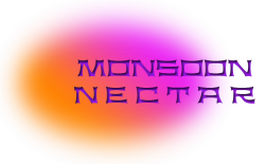
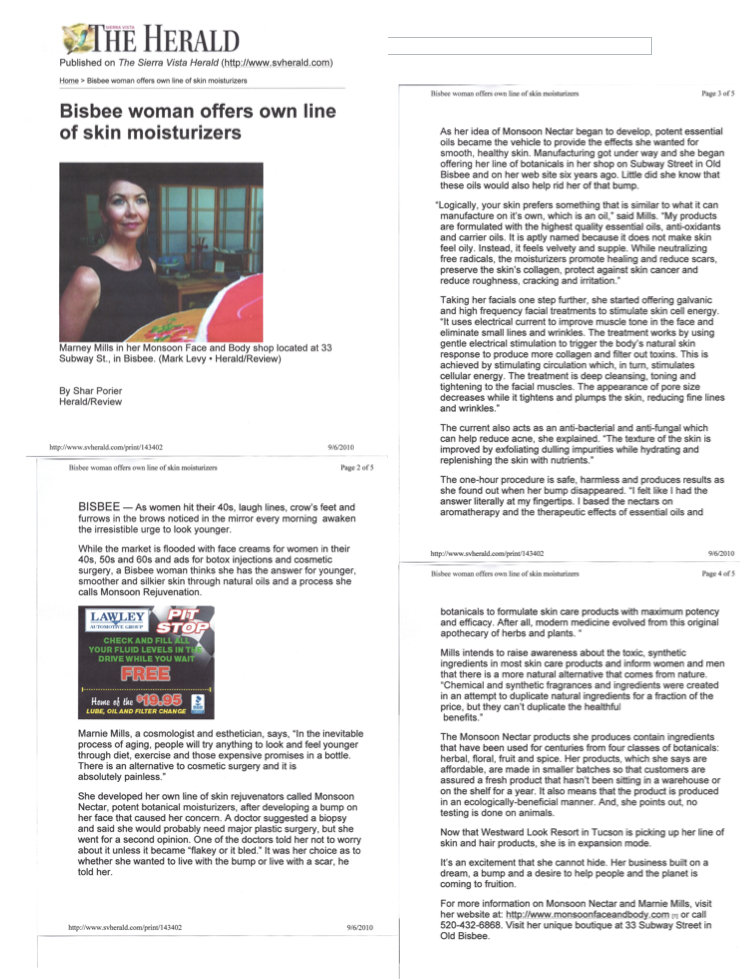
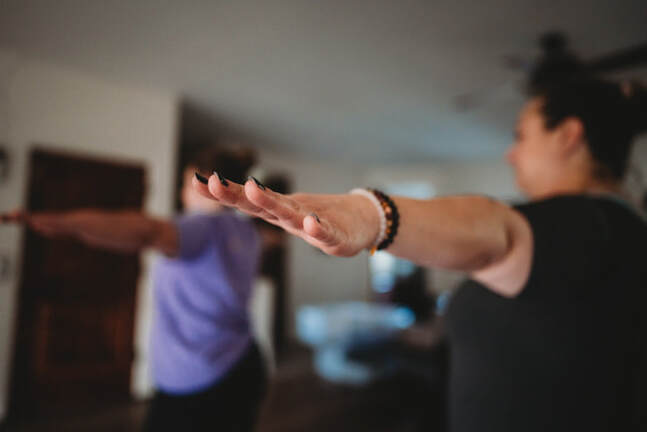
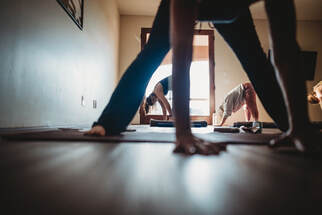
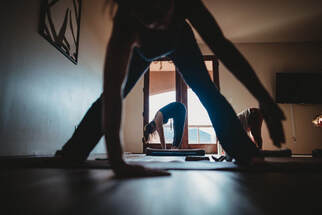


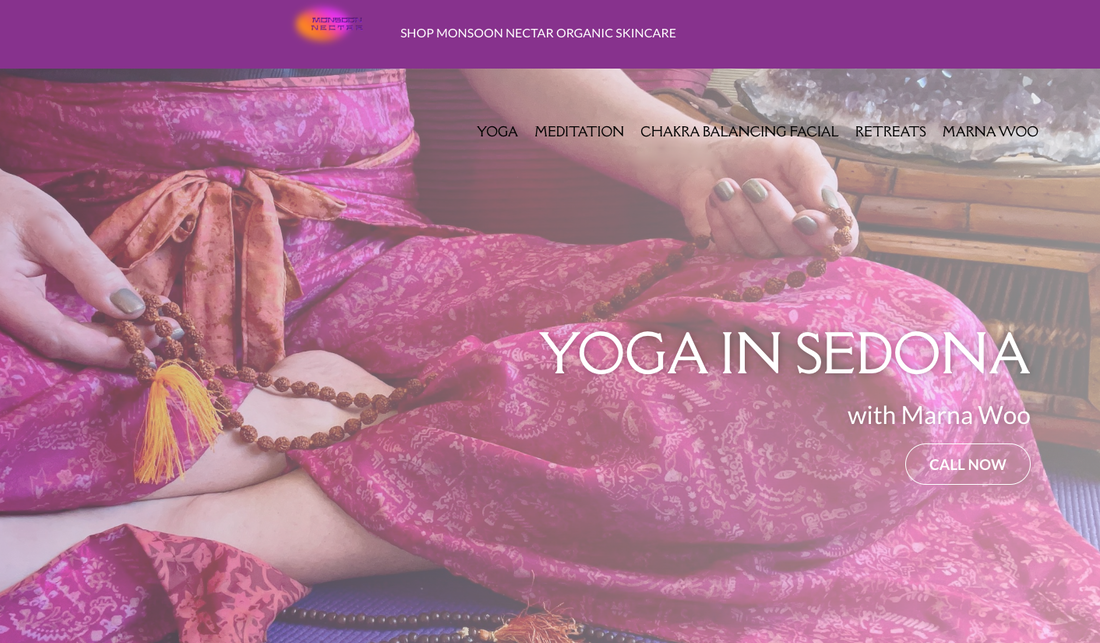

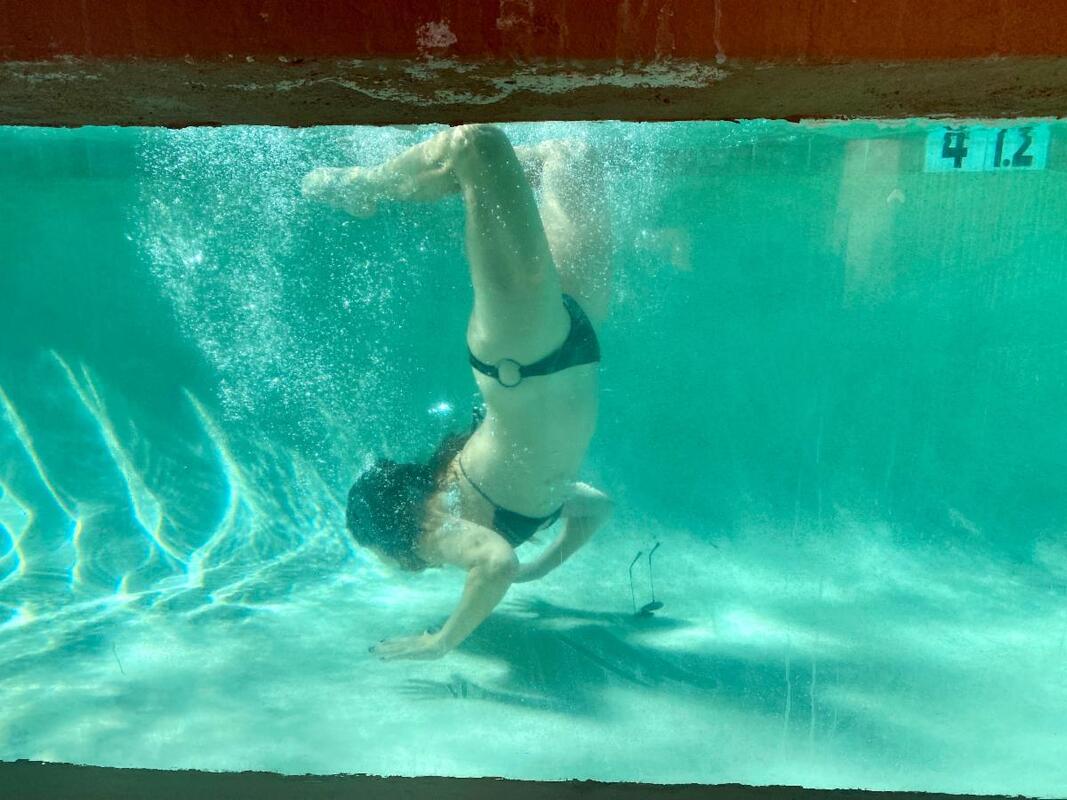
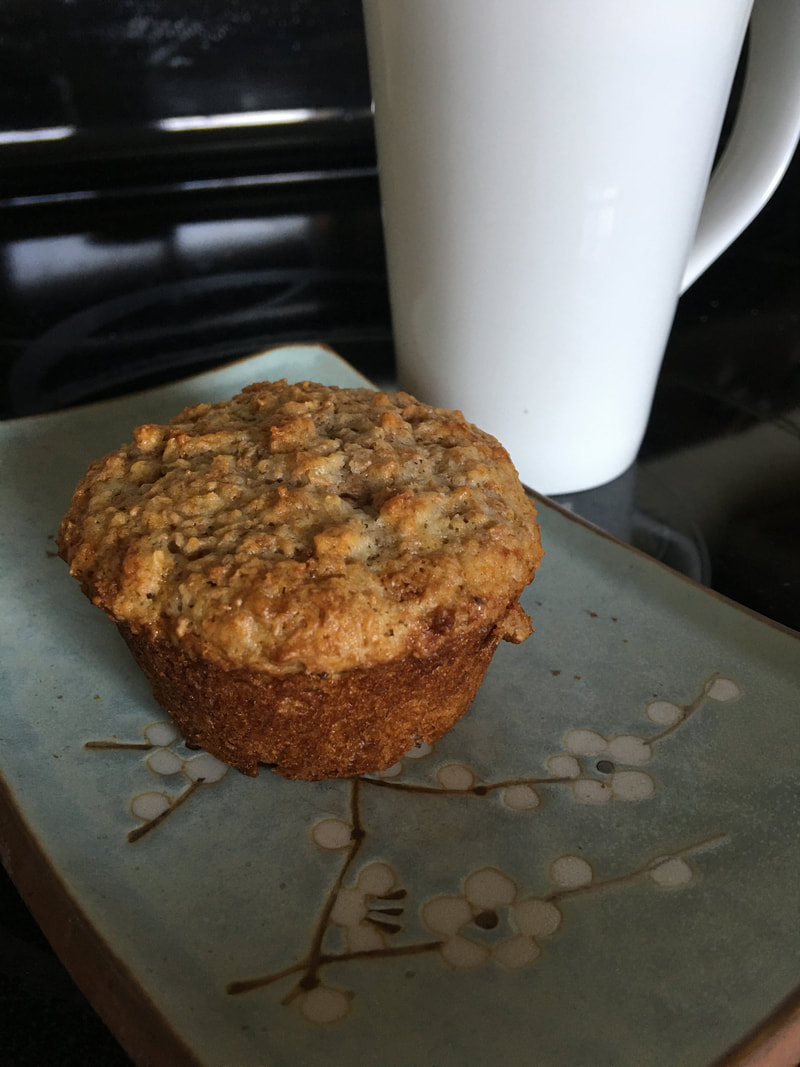
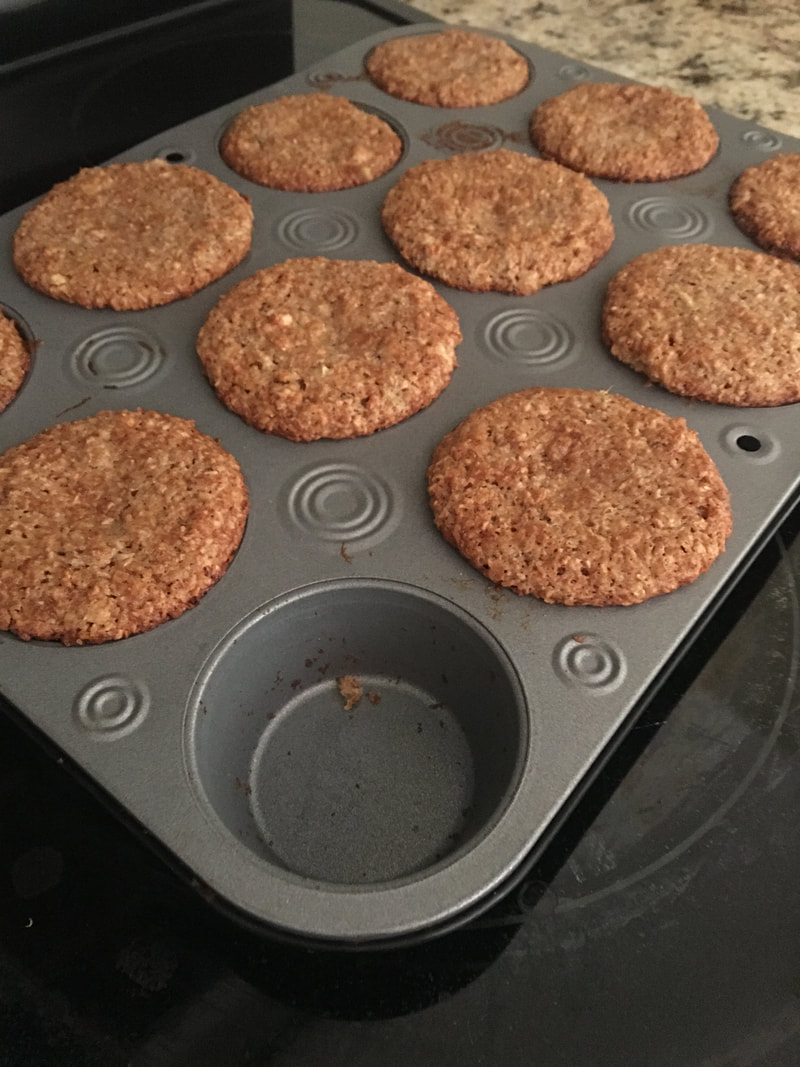
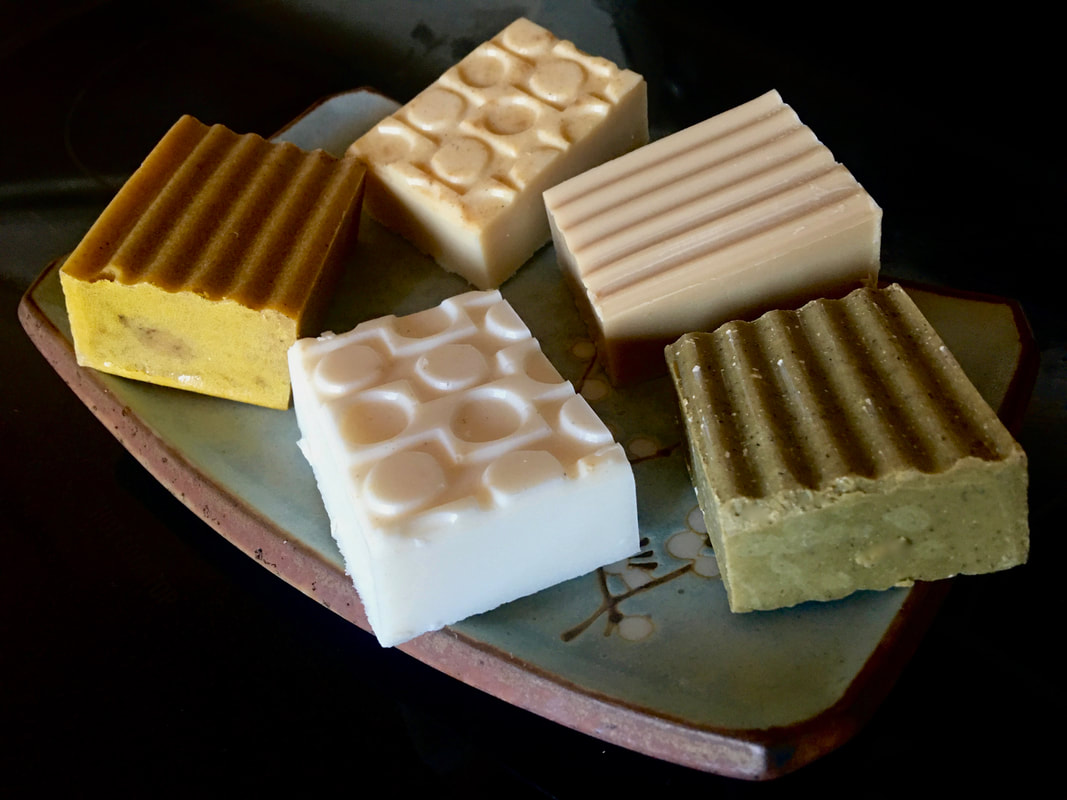
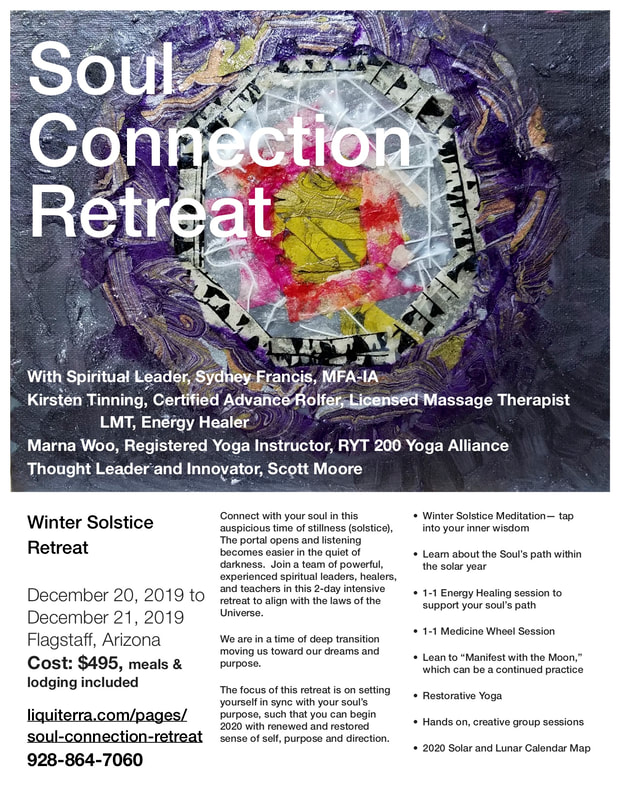
 RSS Feed
RSS Feed